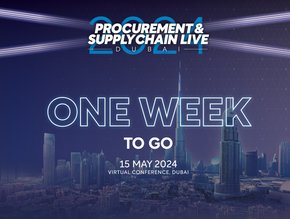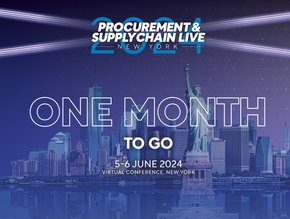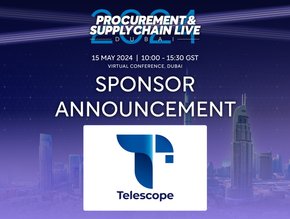Ingrain sustainability as procurement value, says Proxima

For many, procurement was a 'Cinderella' process -- in the background but vital, because 70% of what an organisation earns is spent on suppliers. But no longer. Procurement is now a strategic function, especially as it effects a company's sustainability performance.
For many people, a sustainable procurement process comes down to smart economics. Proxima is a consultancy that helps companies – FTSE 100 ones among them – sustainably transition their procurement and logistics operations.
The company’s Executive Vice President for Procurement, Simon Geale, sees both procurement and sustainability through the lens of spending wisely, and in this regard, the interests of both most certainly overlap.
He goes on: “In very simplistic terms, procurement needs to embed sustainability as a form of value, in the same way as it might think about speed, quality, cost, etc. when creating strategies, buying or measuring outcomes. At certain times, this will mean finding new solutions; at others, it can mean influencing and convincing stakeholders where change can be beneficial in business terms.”
But it’s not always easy accounting for sustainability in procurement, which is often an indirect emission, one which the primary company has to in some way outsource to a contractor. “For most sectors, scope three greenhouse gas emissions – the indirect impacts that occur in a company's value chain – are the largest source of emissions, but getting a handle on them is notoriously difficult.” These are the words of Selina Donald, the Founder and Chief Sustainability Advisor of The Bulb, a sustainability consultancy that specialises in events. As the leader of the sustainability and social values strategy for the recent Birmingham Commonwealth Games’ Opening and Closing Ceremonies, Donald was tasked with overseeing over 100 suppliers.
Align with like-minded suppliers
Recognising that “no one can become net zero until we all become net zero”, Donald stresses the need within procurement to align with like-minded suppliers, as well as to rate the sustainability and social values of potential suppliers.
“In their contract, there’s a clause that requires them to provide sustainability data and ensure that their values align with expected on-site behaviours across power and waste management, transportation and design.” In the event she is not sure, she deploys tools like TRACE, a carbon calculator that tracks the environmental impact of suppliers. By implementing workshops and maintaining regular communication, sustainability was kept at the forefront of her company’s relationship with suppliers. By setting up a direct line via an email address, suppliers were engaged “to provide sustainability support as appropriate and for them to put forward more sustainable options when delivering the product or service”.
Donald neatly summarises the approach: “We recognised that a key driver to meeting our Sustainability and Social Values commitments was working with a like-minded supply chain that can not only meet requirements and provide value for money, but, at the same time, hold sustainability, diversity, and ethical sourcing practices at the core of their operations.”
Still, it doesn’t come down solely to checking your partners. A deep understanding of markets is also informative and essential. Only then will sustainable procurement become shockproof. Going back to Simon Gaele at Proxima, he says: “Understanding the supply market means you will get the best outcomes available to you. If you don’t understand the market, you will always buy what you know, or, at best, be constrained by your own ideas and open to supply market risk. That’s a dangerous place to be in.”
Gaele does concede that the market – the lifeblood of enterprise and capitalism – does have a seminal part in the quest for sustainable procurement: “As unfashionable as it is to say sometimes, markets inform what we should be paying for sustainable solutions; even in a deep collaboration where we are ‘designing to X’, market intelligence informs commercial value calculations, top and bottom line.”






